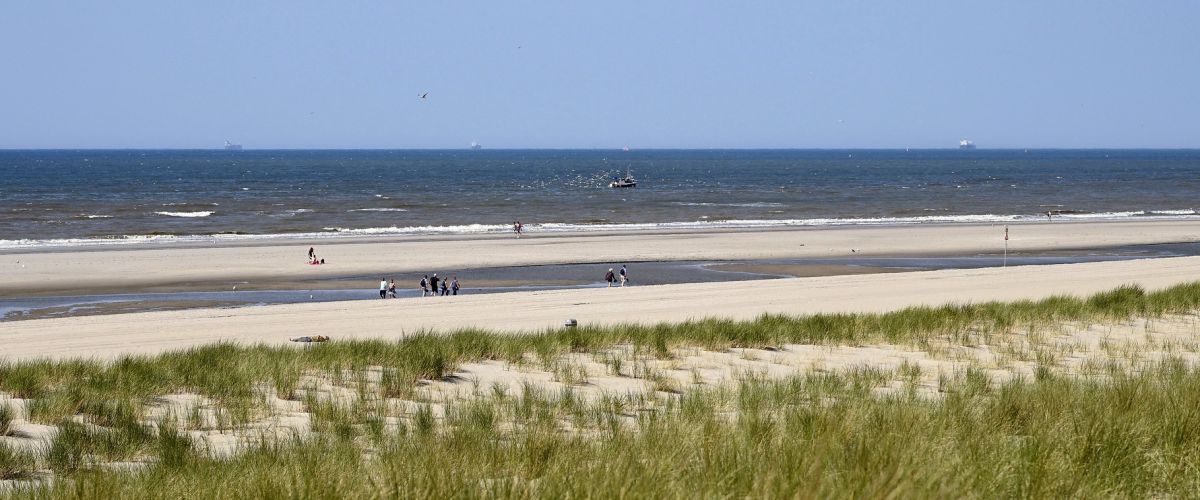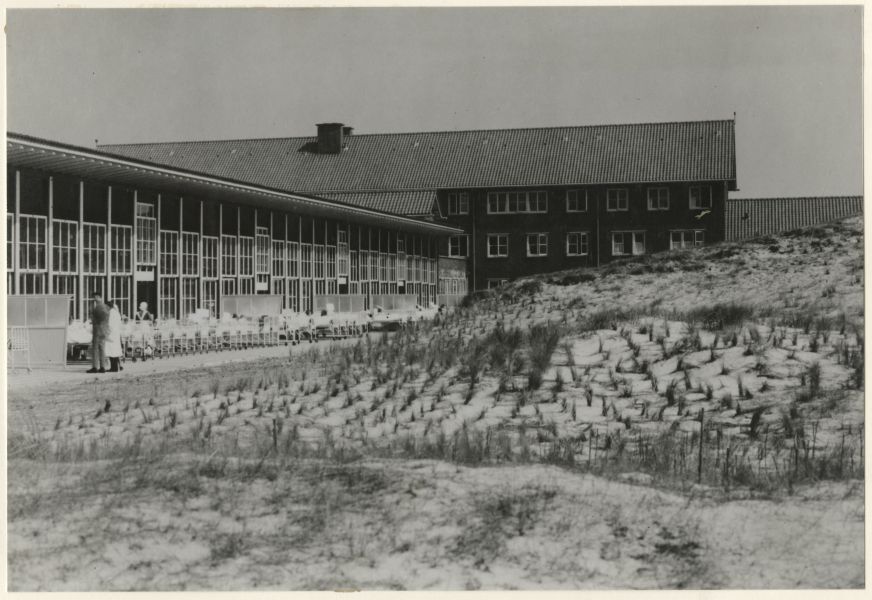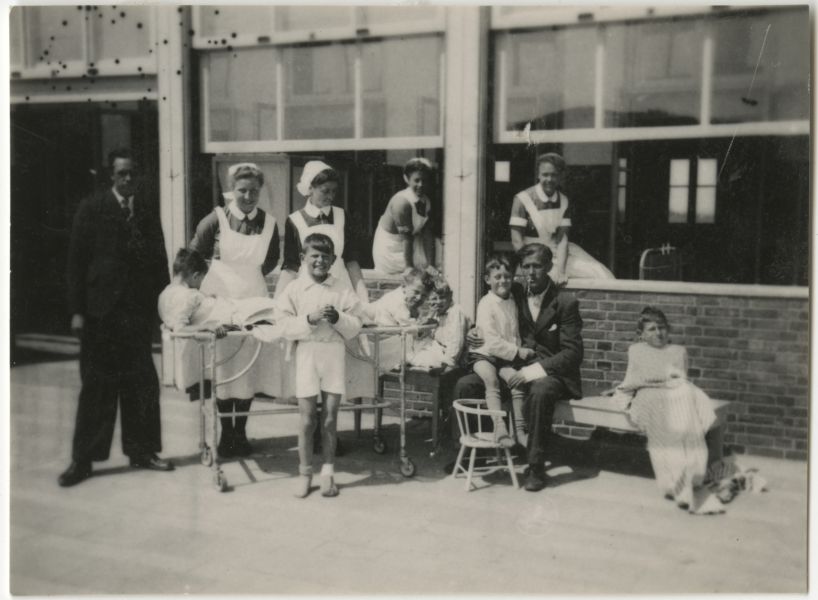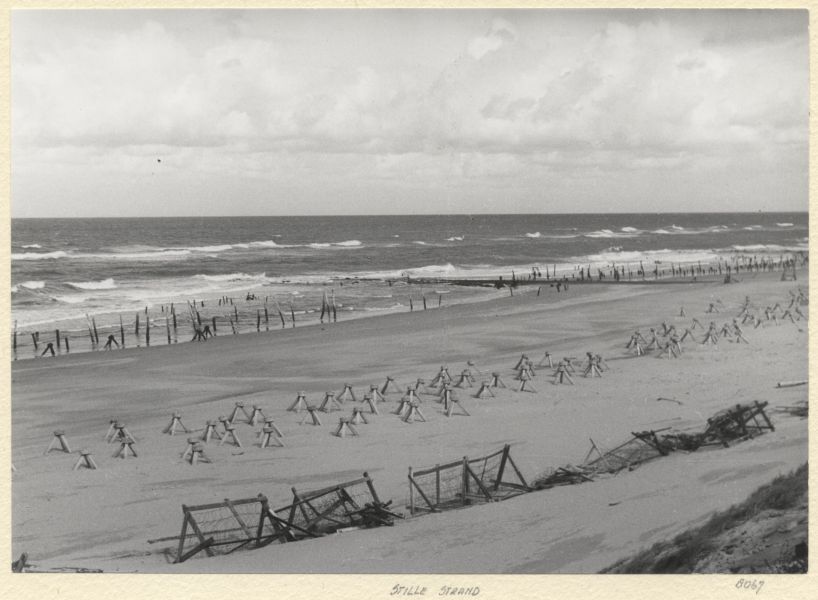Military zone. Entry strictly forbidden
There were mines floating at sea to block Allied vessels. The beach was full of barricades, such as dragon’s teeth fortifications, poles, beams, barbed wire and mines. There were entire bunker complexes in the dunes.
In The Hague, not only did the fortifications of the Atlantic Wall run directly along the coast, but right through the city too. Together, they formed the bastion of Scheveningen. This was the most southerly point of the stronghold. Here, three rows of protruding iron beams ran inland from the sea. A little further up, these barricades gave way to an anti-tank wall, which bridged the gap to the point where the Haagse Beek river rises. There, the wall gave way to an anti-tank trench, which extended further into the city.
The Tweede Zeehospitium, a hospital for children from impoverished families who needed to breathe sea air and bathe in sea water to recuperate, was demolished when these defence fortifications were constructed at the start of 1943. It had opened to much fanfare just six months after the German occupation.
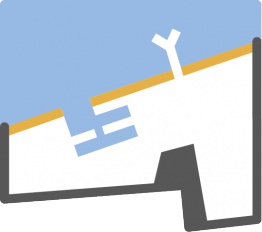 Herinneringsroute Atlantikwall Den Haag
Herinneringsroute Atlantikwall Den Haag
